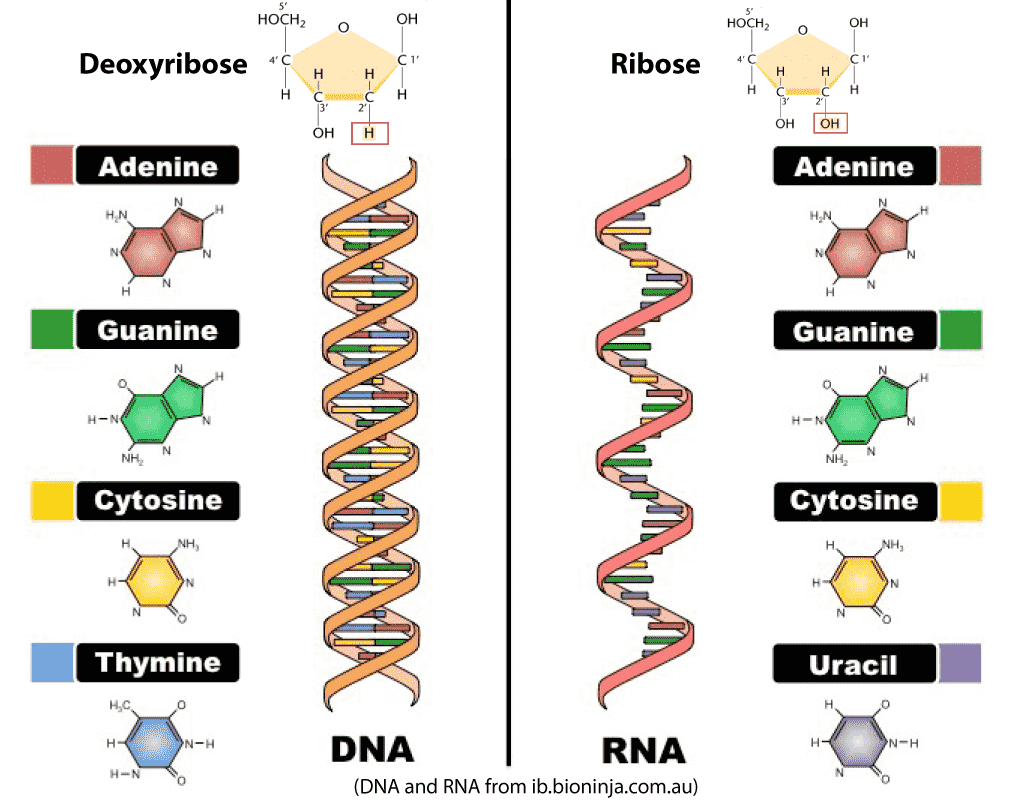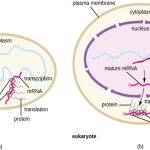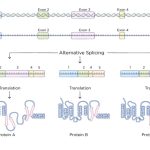Biologists used to view RNA as a lowly messenger — the molecule that carries information from DNA to the protein-building centers of the cell. But discoveries since the early 1980s have shown that RNA can do much more. In addition to carrying genetic information, RNA can fold up into a complex structure that catalyzes a chemical reaction or binds another molecule, linking up with it in a way that allows the other molecule to be identified, activated, or deactivated.
 | This RNA molecule folds into a complex shape and can bind to vitamin B-12. The thick purple ribbon represents the backbone of the RNA molecule and the smaller, hexagonal and pentagonal, tinker-toy structures represent the bases of the molecule. |
A key step in the origin of life was the evolution of a molecule that could copy itself. Once it was discovered that RNA could both carry information and cause chemical reactions (like those that would be required to copy a molecule), RNA became the prime suspect for the earliest self-replicating molecule. In fact, biologists hypothesize that early in life’s history, RNA occupied center stage and performed most jobs in the cell, storing genetic information, copying itself, and performing basic metabolic functions. This is the “RNA world” hypothesis. Today, these jobs are performed by many different sorts of molecules (DNA, RNA, and proteins, mostly), but in the RNA world, RNA did it all.



